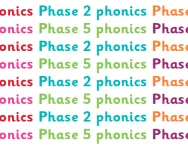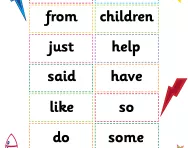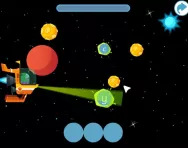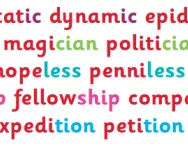TheSchoolRun.com closure date
As we informed you a few months ago, TheSchoolRun has had to make the difficult decision to close due to financial pressures and the company has now ceased trading. We had hoped to keep our content available through a partnership with another educational provider, but this provider has since withdrawn from the agreement.
As a result, we now have to permanently close TheSchoolRun.com. However, to give subscribers time to download any content they’d like to keep, we will keep the website open until 31st July 2025. After this date, the site will be taken down and there will be no further access to any resources. We strongly encourage you to download and save any resources you think you may want to use in the future.
In particular, we suggest downloading:
- Learning packs
- All the worksheets from the 11+ programme, if you are following this with your child
- Complete Learning Journey programmes (the packs below include all 40 worksheets for each programme)
You should already have received 16 primary school eBooks (worth £108.84) to download and keep. If you haven’t received these, please contact us at [email protected] before 31st July 2025, and we will send them to you.
We are very sorry that there is no way to continue offering access to resources and sincerely apologise for the inconvenience caused.
Parents' guide to Phase 6 phonics

What will your child learn in Phase 6 phonics?
By Phase 6, children should be able to read hundreds of words using one of three strategies:
- Reading them automatically
- Decoding them quickly and silently
- Decoding them aloud
In Phase 6 phonics, children build upon the skills they've developed in earlier phases.
Here's what they typically learn:
- Spelling rules: children learn prefixes and suffixes, e.g. ‘in-’ and ‘-ed’
- Word endings: they focus on understanding different word endings, including plurals, verb endings, and suffixes like -ing, -ed, and -er.
- Word families: they explore word families and common root words, helping them recognise patterns in spelling and meaning.
- Homophones and homographs: children learn about words that sound the same but have different meanings (homophones) and words that are spelled the same but have different meanings and pronunciations (homographs).
- Contextual understanding: they develop skills in using context clues to decode unfamiliar words and understand their meanings in different contexts.
- Grammar and punctuation: children begin to learn more about grammar rules, sentence structure, and punctuation marks, enhancing their writing skills.
They will also learn:
- The past tense
- Memory strategies for high frequency or topic words
- Proof-reading
- How to use a dictionary
When will your child be taught Phase 6 phonics?
Although formal phonics teaching is usually complete by the end of Year 2, children continue to use their knowledge as they move up the school and may be taught Phase 6 phonics into KS2.
Sara Wernham, a primary school teacher and one of the developers of the Jolly Phonics scheme, explains: ‘The whole aim of phonics teaching is not just to learn the sounds, but to use them as a tool for reading and spelling. Everything leads on to independent reading and writing.’
What sounds will your child be taught in Phase 6 phonics?
In Phase 6 phonics, children are not typically taught new individual sounds as they were in earlier phases. Instead, Phase 6 focuses on developing more advanced phonemic awareness and applying the knowledge they have gained from previous phases.
How can you help your child with Phase 6 phonics at home?
You can support your child with Phase 6 phonics at home in several ways:
- Reading together: encourage your child to read a variety of texts, including books, newspapers, and websites. Discuss any unfamiliar words they come across and help them understand their meanings.
- Word games: play word games such as Scrabble, Boggle, or word searches to reinforce spelling patterns and word endings.
- Writing practice: encourage your child to write stories, poems, or journal entries, focusing on using correct spelling, grammar, and punctuation. Provide feedback and praise their efforts.
- Prefixes and suffixes: help your child understand the meanings of common prefixes and suffixes by discussing examples in everyday language. Encourage them to identify and use these affixes in their writing.
- Plural practice: practice forming plurals with your child, both regular (adding -s, -es) and irregular (changing the spelling). Create sentences together using plural nouns.
- Word families: explore word families with your child, identifying common root words and discussing how words within the same family are related in meaning and spelling.
- Homophones and homographs: discuss examples of homophones and homographs with your child, emphasising their different meanings and spellings. Create sentences together to illustrate the differences.
- Context clues: encourage your child to use context clues to figure out the meanings of unfamiliar words when reading. Discuss how surrounding words and sentences can help determine the meaning of a word.
- Grammar and punctuation: review grammar rules and punctuation marks with your child, practising their use in sentences. Provide examples and encourage your child to apply these rules in their writing.
- Positive reinforcement: offer praise and encouragement to your child as they engage with Phase 6 phonics activities. Celebrate their progress and successes, and provide support and guidance when needed.





